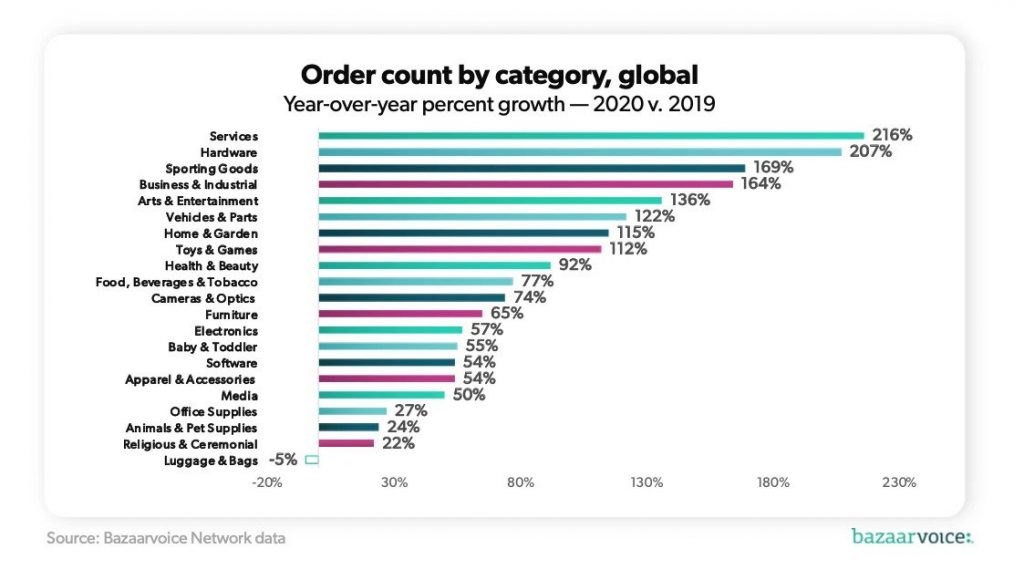Table of Contents
It is probably not early to say that the Covid-19 pandemic will mark the year of 2020. Not only due to its omnipresence but because of the different ways, it has changed our daily and business lives.
The internet is brimming with data on what has changed during or thanks to the pandemic; it is equally packed with tips on how to adapt to the new situation (both in private and business aspects), and with a prognosis on what to expect in the following months.
There is one point where advice and prognosis meet, and it is related to e-commerce. And if you’re in the cloud industry, you know that online orders and purchases are almost inseparable with this technology.
Sure, you know all about scalability and how practical it is to spend just as much as you use. How the possibility to scale your resources according to the demand can be a business-saviour, and for various reasons. But this is just the tip of the iceberg.
Why go to the store when you can buy online?
But let’s go back one step for a second.
We mentioned how the world is changing due to the Covid-19 pandemic and how one of the main aspects to mark a major difference is e-commerce. Shopping habits are dramatically changing for years now and coronavirus has just accelerated the inevitable: a big shift to the online purchase of goods and services from various categories.
According to Forbes, in the US and Canada, there’s been a 129% increase in YoY in e-commerce orders and a 146% growth in all online retail orders. As many as 52% of respondents in the PYMNTS research stated that they won’t go back to the traditional shopping of groceries. The same study showed that online shopping for non-grocery items tripled in April.
What about other categories? Just take a look at the numbers below and remember – they’re global.
Why buy from your desktop, when you can use your mobile?
Don’t worry – the global virus pandemic didn’t stop the e-commerce evolution which has been unfolding as the shopping habits have been shifting to the web. On the contrary! Many businesses realized that e-commerce will be their bread and butter and the explosion in online shopping demand just made the race for the consumer more challenging and interesting.
According to many analyses, the typical online shopping experience is changing. Augmented reality is taking its place in the optimal pre-shopping user experience. Chatbot and “personal assistant” usage are rising; so is the voice search for desired goods and services. Additional payment methods, from cryptocurrencies to digital wallet are becoming more available. With that, the mobile commerce trend takes over the e-commerce market – is it widely known that this year, mobile devices will reign the world of buying online and having that in mind, we can expect a rise in e-commerce mobile adjustments. From responsive designs to mobile-based payments.
Why cloud and e-commerce go hand in hand
Remember the tip of the iceberg? None of the abovementioned, let alone the chatbots and AR, can be easily done without a strong, reliable and cost-efficient platform. Enter the public cloud.
There are several key – or even obligatory – features every e-commerce business must offer. And the way you’re providing them is not the same as it was two years ago. Today, your customer is spoiled with competition shooting out rainbows to get their attention and provide a perfect shopping UX, while DDoS attacks are more often and serious. So, before you wish to indulge your online visitors with a personalized, AI-based offers, make sure the e-commerce is secure, fast and scalable. With the help of a cloud.
Scalability
Prior to the corona outbreak, most web businesses were accustomed to seasonal peaks which needed to be supported properly. For this, the cloud is completely irreplaceable. As it turns out, it is not just super-useful for handling Black Fridays. With its flexible nature, the public cloud ensures an increased technical capacity every time, without disrupting the user experience. This makes you market, demand and innovation ready. You can handle an increased number of requests and test new trends without fearing the downtime.
Speed
The average attention span of a digital user is just 6 seconds. Divide that by three – this is how much time you have for your shop to be fully loaded and functional in order to keep the customer. Many e-commerce businesses are struggling with this statistic and therefore turning to cloud. One of the ways to solve poor load time is with CDN (Content Delivery Networks), a geographically distributed group of servers which work together to improve speed and connectivity. CDN also reduced bandwidth costs and helps you protect from DDoS attacks.
Security
Cloud architecture was built to be safe and reliable. From end-to-end data encryption, SSL, regular patches and updates to access management and control; DDoS protection on cloud is multi-layered and represents an integral part of management on the cloud. Make sure to consult experts for setting a proactive security strategy that will cover all, from vulnerability detection to monitoring. Get in touch with our dedicated team for a free consultation.
Conclusion
This year has shown us just how unpredictable an e-commerce business can be. What is sure is that your customers and their behaviour are changing. The good news is that technology pace is faster than the human one. So, with the right set of tools and solutions, you can adjust and equip your e-commerce to all emerging trends with full confidence.

